
How to Use Step down 24vdc - 5vdc: Examples, Pinouts, and Specs
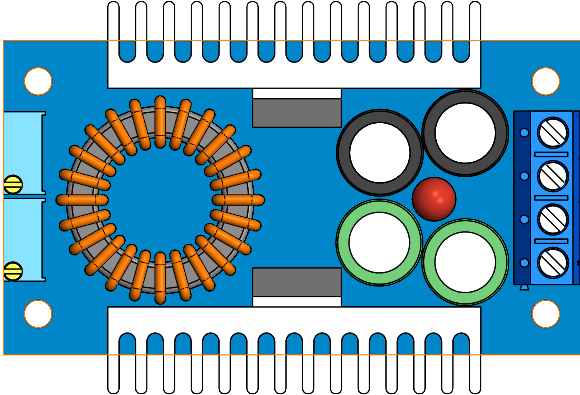
 Design with Step down 24vdc - 5vdc in Cirkit Designer
Design with Step down 24vdc - 5vdc in Cirkit DesignerIntroduction
The Step Down 24VDC - 5VDC voltage regulator is an essential electronic component designed to convert a higher DC voltage (24V) to a lower DC voltage (5V). This component ensures that devices requiring a stable 5V power supply can operate safely and efficiently, even when the input voltage is significantly higher. It is widely used in applications such as powering microcontrollers, sensors, and other low-voltage devices in industrial, automotive, and hobbyist projects.
Explore Projects Built with Step down 24vdc - 5vdc
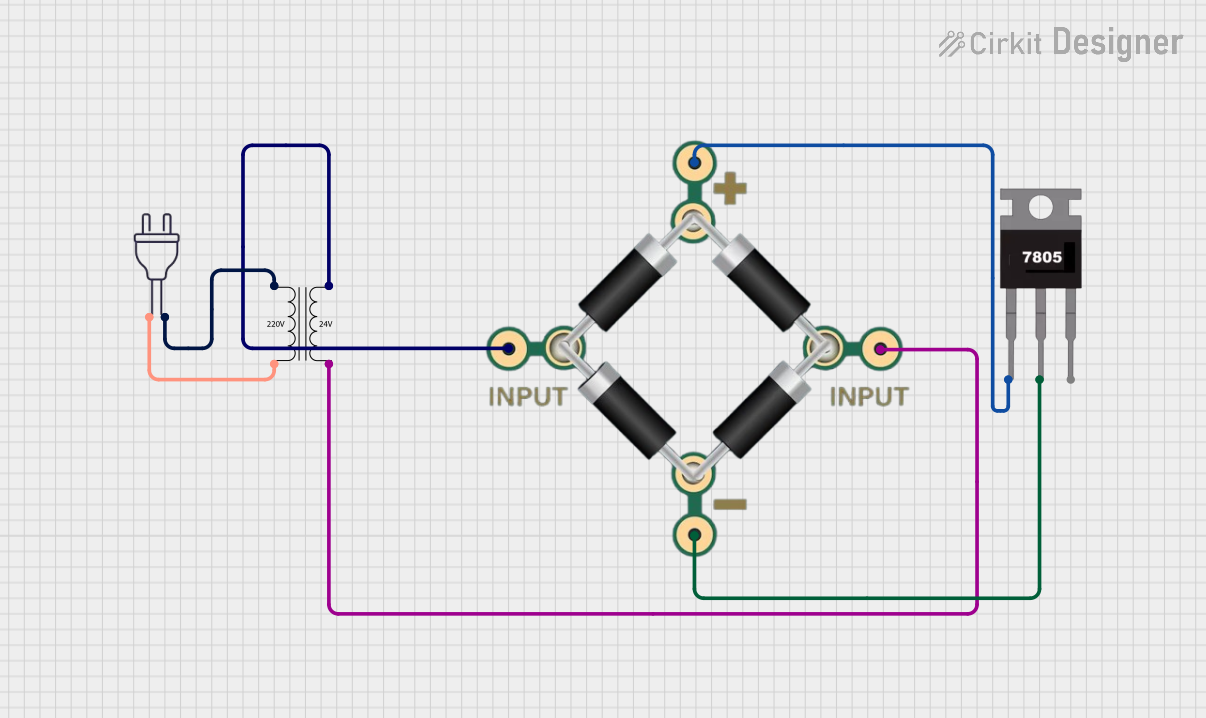
 Open Project in Cirkit Designer
Open Project in Cirkit Designer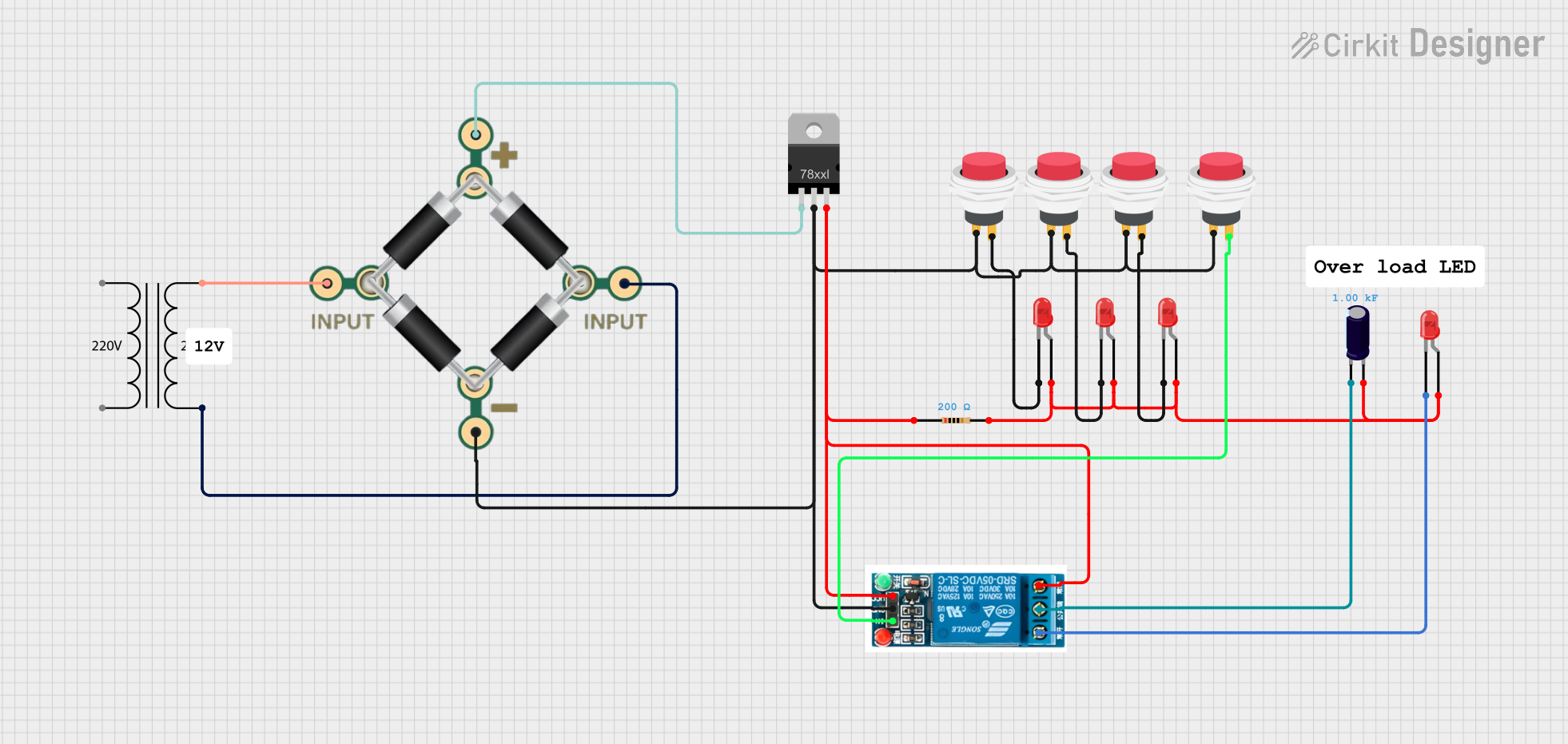
 Open Project in Cirkit Designer
Open Project in Cirkit Designer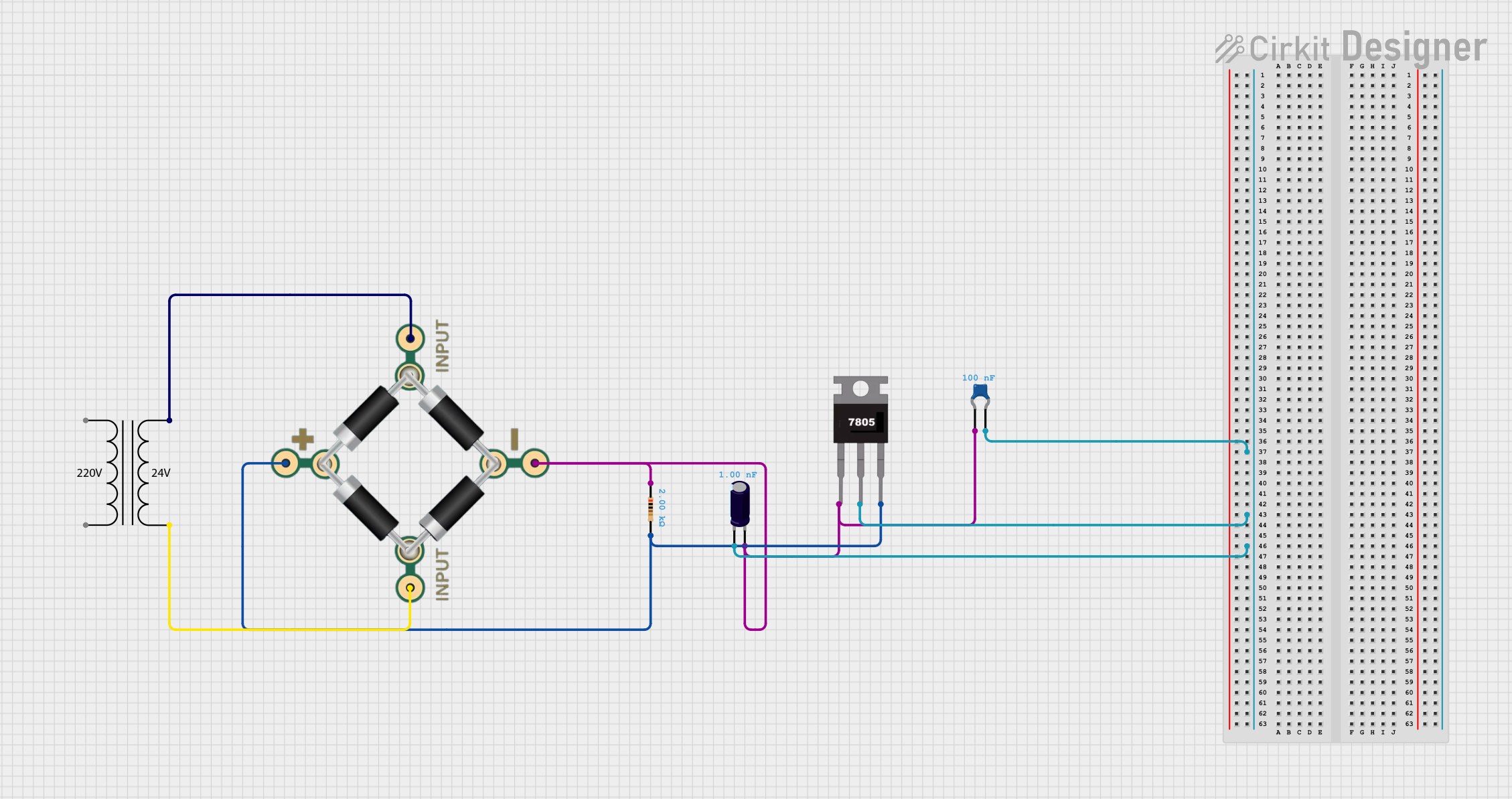
 Open Project in Cirkit Designer
Open Project in Cirkit Designer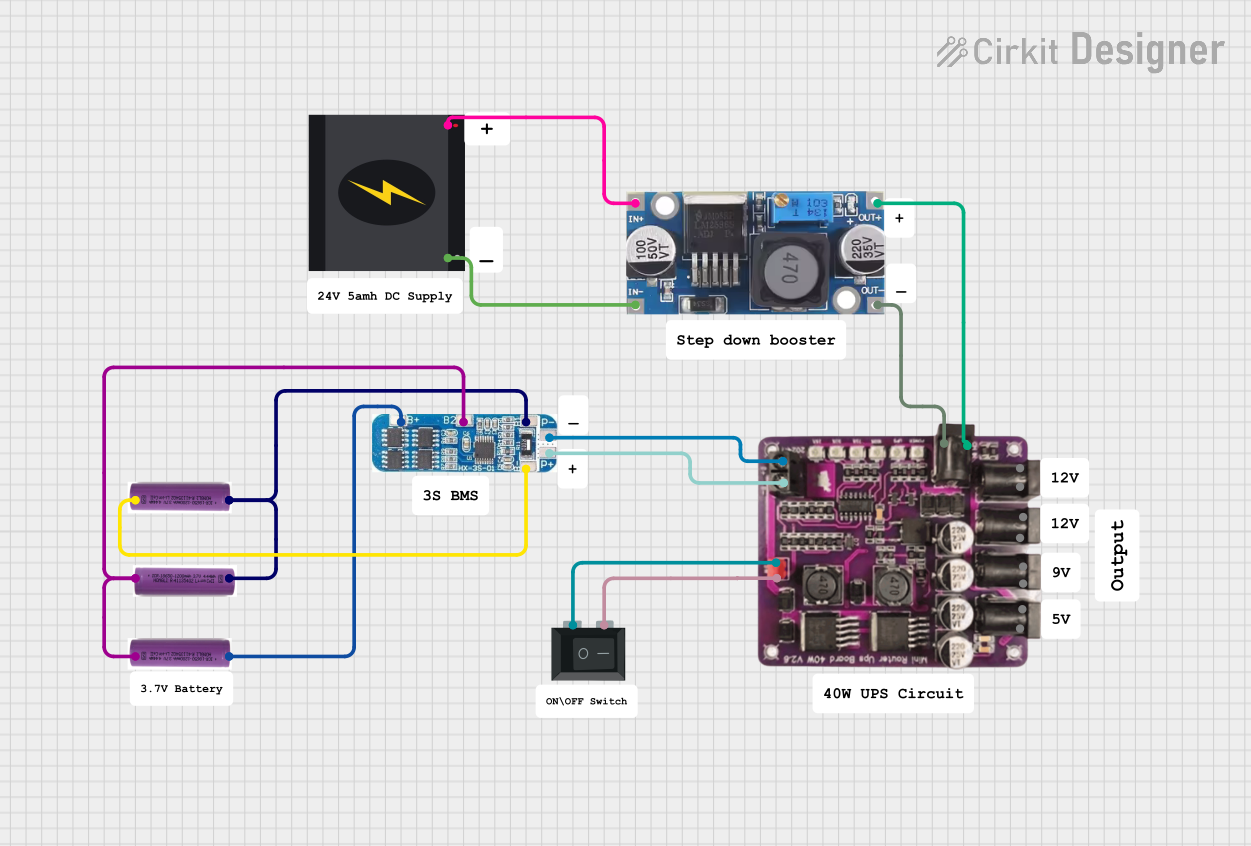
 Open Project in Cirkit Designer
Open Project in Cirkit DesignerExplore Projects Built with Step down 24vdc - 5vdc

 Open Project in Cirkit Designer
Open Project in Cirkit Designer
 Open Project in Cirkit Designer
Open Project in Cirkit Designer
 Open Project in Cirkit Designer
Open Project in Cirkit Designer
 Open Project in Cirkit Designer
Open Project in Cirkit DesignerCommon Applications and Use Cases
- Powering microcontrollers like Arduino, Raspberry Pi, and ESP32.
- Supplying 5V to sensors, relays, and other low-voltage modules.
- Industrial automation systems requiring voltage conversion.
- Automotive electronics where 24V systems are common.
- DIY electronics projects and prototyping.
Technical Specifications
Below are the key technical details of the Step Down 24VDC - 5VDC voltage regulator:
| Parameter | Value |
|---|---|
| Input Voltage Range | 6V to 24V DC |
| Output Voltage | 5V DC |
| Output Current | Up to 3A (depending on the model) |
| Efficiency | Up to 95% |
| Ripple Voltage | < 30mV |
| Operating Temperature | -40°C to +85°C |
| Dimensions | Varies by model (e.g., 25mm x 15mm) |
Pin Configuration and Descriptions
The pinout of the Step Down 24VDC - 5VDC regulator is typically as follows:
| Pin Name | Description |
|---|---|
| VIN | Input voltage pin (connect to 24V DC source) |
| GND | Ground pin (common ground for input and output) |
| VOUT | Output voltage pin (provides regulated 5V DC output) |
Usage Instructions
How to Use the Component in a Circuit
Connect the Input Voltage (VIN):
Attach the VIN pin to a DC power source with a voltage between 6V and 24V. Ensure the input voltage does not exceed the maximum rating to avoid damaging the regulator.Connect the Ground (GND):
Connect the GND pin to the ground of your circuit. This serves as the common reference point for both input and output.Connect the Output Voltage (VOUT):
Attach the VOUT pin to the device or circuit requiring a 5V power supply. Ensure the connected load does not exceed the regulator's maximum current rating.Optional Capacitors:
For improved stability and reduced ripple, you can add capacitors (e.g., 10µF electrolytic and 0.1µF ceramic) across the input and output pins.
Important Considerations and Best Practices
- Heat Dissipation: If the regulator is operating near its maximum current rating, ensure proper heat dissipation using a heatsink or adequate ventilation.
- Input Voltage Range: Always verify that the input voltage is within the specified range (6V to 24V). Exceeding this range can damage the regulator.
- Polarity Protection: Double-check the polarity of the input connections to avoid reverse voltage damage.
- Load Requirements: Ensure the connected load does not draw more current than the regulator's maximum output capacity.
Example: Using with an Arduino UNO
The Step Down 24VDC - 5VDC regulator can be used to power an Arduino UNO from a 24V power source. Below is an example circuit and code:
Circuit Connections
- Connect the VIN pin of the regulator to the 24V power source.
- Connect the GND pin of the regulator to the ground of the power source and the Arduino.
- Connect the VOUT pin of the regulator to the 5V pin of the Arduino UNO.
Example Code
// Example code to blink an LED connected to pin 13 of the Arduino UNO
// Ensure the Arduino is powered via the 5V output of the step-down regulator
void setup() {
pinMode(13, OUTPUT); // Set pin 13 as an output
}
void loop() {
digitalWrite(13, HIGH); // Turn the LED on
delay(1000); // Wait for 1 second
digitalWrite(13, LOW); // Turn the LED off
delay(1000); // Wait for 1 second
}
Troubleshooting and FAQs
Common Issues Users Might Face
No Output Voltage:
- Cause: Incorrect wiring or insufficient input voltage.
- Solution: Verify the connections and ensure the input voltage is within the specified range.
Overheating:
- Cause: Excessive current draw or poor heat dissipation.
- Solution: Reduce the load current or add a heatsink to the regulator.
Output Voltage Fluctuations:
- Cause: Insufficient input voltage filtering or high ripple.
- Solution: Add capacitors across the input and output pins to stabilize the voltage.
Device Not Powering On:
- Cause: Incorrect polarity or damaged regulator.
- Solution: Check the polarity of the connections and replace the regulator if necessary.
FAQs
Q: Can I use this regulator to power a 3.3V device?
A: No, this regulator is designed to output a fixed 5V. You would need a separate 5V to 3.3V regulator for such applications.
Q: Is it safe to use this regulator with a 12V input?
A: Yes, the regulator supports input voltages between 6V and 24V, so 12V is within the safe range.
Q: Can I connect multiple devices to the 5V output?
A: Yes, as long as the total current draw of all devices does not exceed the regulator's maximum output current (e.g., 3A).
Q: Does this regulator provide short-circuit protection?
A: Some models include built-in short-circuit protection, but it is recommended to check the specific datasheet for your regulator.